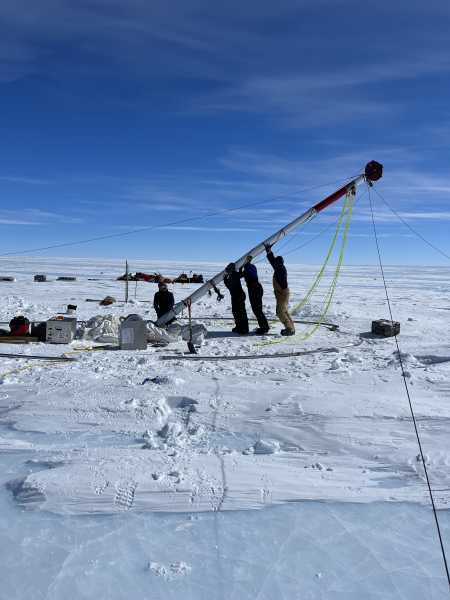
Lake Natron sometimes appears red due to the abundance of microorganisms that prefer salty environments. (Photo credit: derejeb/Getty Images)
The chemical composition of Lake Natron is so aggressive that it makes it uninhabitable for most organisms. It is a “soda” lake, meaning that it contains high levels of dissolved sodium and carbonate. Because of the high concentration of salts and minerals, the pH of the lake’s water can reach 10.5, which is close to the caustic level of ammonia solution – and animals that die on the shores of Lake Natron are preserved as calcified mummies as a result.
Lake Natron is located along the East African Rift System, a tectonic plate divide that is tearing apart the African Plate. This geology suggests that the lake was formed by volcanic activity that released significant amounts of sodium carbonate and calcium carbonate. These salts and other minerals flow into the lake from the surrounding hills and enter the water through hot springs, as previously reported by Live Science. The lake is not connected to rivers or the sea, so chemical concentrations remain high throughout the year.
Few animals can survive in the high salt and pH conditions of Lake Natron, as the water can seriously burn the skin and eyes of anyone trying to drink or swim in it. However, creatures that have adapted to these conditions, including the lesser flamingo (Phoeniconaias minor) and tilapia, thrive in and around the lake.
You may like
- Pair of 'glowing' lava lakes found at Africa's most active volcanoes erupting simultaneously
- Lake Salda: The only place on Earth similar to Jezero Crater on Mars
- Crop circles surround Iraq's colourful 'Sea of Salt' after years of drought
In fact, Lake Natron is the most important breeding ground for lesser flamingos in the world, and most of East Africa’s 1.5 to 2.5 million lesser flamingos, which make up about 75 percent of the world’s population of the species, hatch in the lake, according to the Tanzania Wildlife Management Authority. Lesser flamingos have tough skin and scales on their feet that protect them from being burned by the water. The birds build their nests on islands that form in the lake during the dry season, as previously reported by Live Science, and their chicks are largely protected from most predators thanks to the harsh conditions.
Additionally, Lake Natron is extremely alkaline and so shallow that its water temperatures can reach a scorching 140 degrees Fahrenheit (60 degrees Celsius) during the hottest months, according to NASA Earth Observatory. The lake is 1.6 feet (0.5 meters) deep and 9 miles (15 kilometers) wide, but its size varies with weather conditions, with less rainfall and river inflows during the dry season causing it to narrow (and vice versa).
When the lake dries up, microorganisms that feed on the salts begin to multiply. Haloarchaea (salt-loving organisms without a nucleus) and cyanobacteria (blue-green algae) can give the lake different shades of red thanks to pigments in their cells. These same pigments are what make the lesser flamingo pink, according to NASA Earth Observatory, because these flamingos feed almost exclusively on blue-green algae.
Sourse: www.livescience.com





